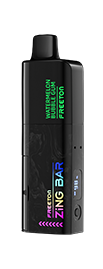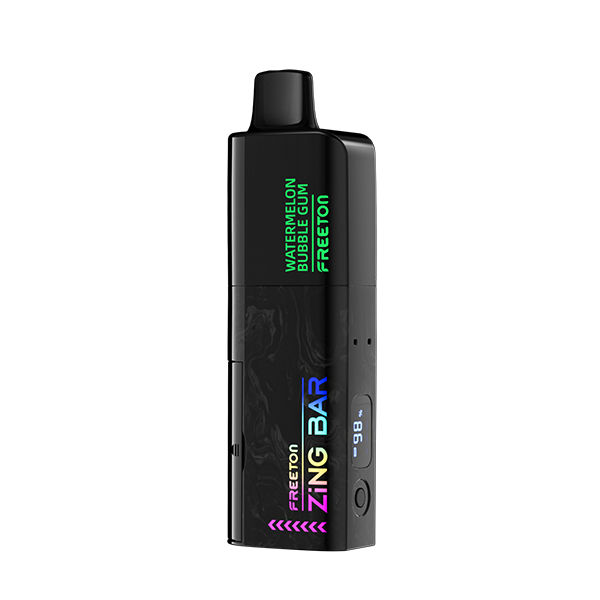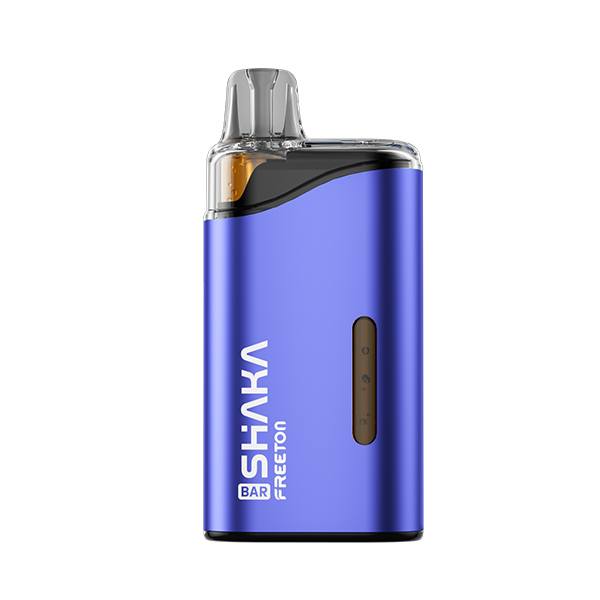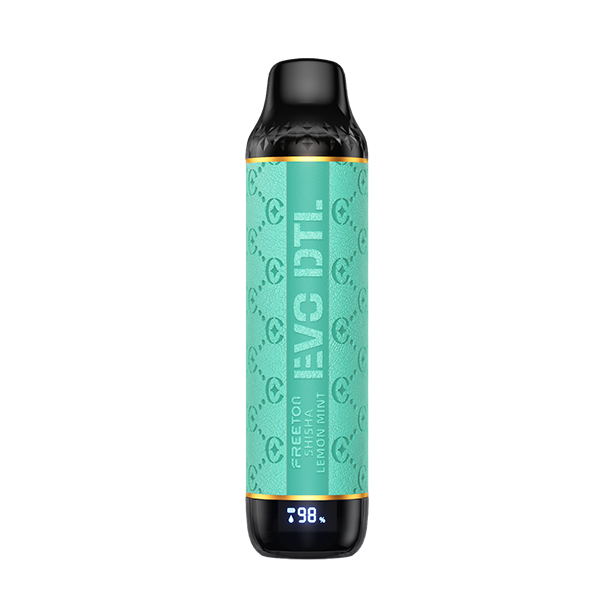
Disposable electronic cigarettes have gained significant popularity as an alternative to traditional smoking, particularly due to their perceived reduced harm. However, as the use of disposable electronic cigarettes continues to increase, concerns have arisen regarding their potential impact on indoor air quality. This guide aims to examine the effects of disposable electronic cigarettes on indoor […]
Disposable electronic cigarettes have gained significant popularity as an alternative to traditional smoking, particularly due to their perceived reduced harm. However, as the use of disposable electronic cigarettes continues to increase, concerns have arisen regarding their potential impact on indoor air quality. This guide aims to examine the effects of disposable electronic cigarettes on indoor air quality, considering emissions, aerosols, comparisons with traditional cigarettes, secondhand aerosol exposure, indoor air quality monitoring and studies, regulations and policies, perception and attitudes, ventilation and mitigation strategies, emerging research, and future directions.
Overview of the Increasing Use of Disposable Electronic Cigarettes and the Need to Understand their Potential Effects
Disposable electronic cigarettes have become increasingly prevalent, driven by factors such as their portability, convenience, and the perception of reduced harm compared to traditional cigarettes. As their popularity grows, it is crucial to understand the potential implications of their use, particularly in indoor environments. Indoor air quality plays a significant role in maintaining a healthy environment for occupants, and the emissions and aerosols from disposable electronic cigarettes have the potential to affect this air quality.
This guide aims to provide a comprehensive overview of the impact of disposable electronic cigarettes on indoor air quality. By examining various aspects such as emissions, comparisons with traditional cigarettes, secondhand aerosol exposure, indoor air quality monitoring and studies, regulations and policies, perception and attitudes, ventilation and mitigation strategies, emerging research, and future directions, readers will gain insights into the potential effects of disposable electronic cigarettes and the importance of creating clean and healthy indoor environments.

Emissions and Aerosols of Disposable Electronic Cigarettes
Disposable electronic cigarettes produce emissions and aerosols that can have implications for indoor air quality. These emissions consist of particles, volatile organic compounds (VOCs), and nicotine. When a user inhales and exhales aerosol, it enters the surrounding environment, potentially affecting the air quality.
Aerosols generated by disposable electronic cigarettes can vary depending on factors such as device design, e-liquid composition, and user behavior. These aerosols contain fine particles that can be inhaled by individuals in proximity to the user. Additionally, they may contain VOCs, which are chemicals that can be released into the air and may have health implications.
It is important to differentiate between exhaled aerosols, emitted by the user, and mainstream aerosols, directly released from the device. Exhaled aerosols primarily consist of water vapor, while mainstream aerosols contain a mixture of particles, VOCs, and potentially nicotine.
Understanding the composition and potential risks associated with these emissions and aerosols is crucial in assessing their impact on indoor air quality and the health of individuals in the vicinity.
Comparison with Traditional Cigarettes
When comparing the emissions of disposable electronic cigarettes with traditional cigarettes, notable differences arise. Traditional cigarettes produce smoke through combustion, resulting in the release of thousands of chemicals, including numerous harmful substances.
Studies have found that disposable electronic cigarettes generally emit lower levels of harmful chemicals compared to traditional cigarettes. The absence of tobacco combustion in electronic cigarettes contributes to the reduction in harmful substances such as carbon monoxide, tar, and certain carcinogens. While disposable electronic cigarettes are not entirely free from potentially harmful chemicals, their emissions are generally lower in comparison.
The potential reduction in harmful substances with the use of disposable electronic cigarettes can contribute to a potential improvement in indoor air quality, particularly in environments where traditional smoking is prohibited.
Secondhand Aerosol Exposure
Secondhand aerosol exposure from disposable electronic cigarettes is a significant consideration when assessing their impact on indoor air quality. When users exhale aerosol, the particles and chemicals present in the exhaled aerosol disperse into the surrounding air, potentially exposing bystanders to these substances.
Studies have shown that secondhand aerosol from disposable electronic cigarettes contains various chemicals, including nicotine, particulate matter, and potentially harmful VOCs. The levels of these substances can vary depending on factors such as device type, e-liquid composition, and user behavior.
Compared to traditional cigarette smoke, the levels of harmful chemicals in secondhand aerosol from disposable electronic cigarettes are generally lower. However, it is important to note that secondhand aerosol exposure is not without risks, particularly for vulnerable populations such as children, pregnant women, and individuals with respiratory conditions.
Understanding the differences in exposure between traditional cigarette smoke and electronic cigarette aerosol helps inform discussions around their impact on indoor air quality and the potential health effects on individuals in close proximity to users.
Indoor Air Quality Monitoring and Studies
Monitoring indoor air quality and conducting studies on the impact of disposable electronic cigarettes provide valuable insights into their effects on the surrounding environment. Researchers have conducted studies to measure the presence of aerosol particles and chemicals in indoor settings where electronic cigarette use occurs.
These studies have demonstrated that aerosol particles and chemicals from disposable electronic cigarettes can be detected in indoor environments. The concentrations of these substances can vary depending on factors such as the size of the room, ventilation, and the number of users.
Research has also explored the potential consequences of exposure to electronic cigarette aerosol on vulnerable populations. Children, individuals with respiratory conditions, and those with compromised immune systems may be more susceptible to the effects of these substances.
Understanding the findings from indoor air quality monitoring and studies helps inform policy decisions, public health initiatives, and the development of guidelines aimed at promoting clean indoor air environments.
Regulations and Policies
Regulations and policies regarding the use of disposable electronic cigarettes indoors vary across different jurisdictions. Smoke-free policies, which are primarily aimed at traditional cigarette smoking, often extend to electronic cigarette use in many settings.
Some jurisdictions have implemented specific regulations to address the use of disposable electronic cigarettes indoors, while others rely on existing smoke-free policies. These regulations and policies aim to protect individuals from exposure to secondhand aerosol and promote clean indoor air environments.
It is important for individuals to be aware of and comply with the regulations and policies in their specific jurisdictions. Understanding the guidelines regarding the use of disposable electronic cigarettes indoors helps ensure adherence to the rules and contributes to maintaining clean and healthy indoor environments.
The variations in regulations across different European countries highlight the complexity of addressing the impact of disposable electronic cigarettes on indoor air quality. Harmonizing regulations and promoting consistent policies can help create clarity and provide a unified approach to protect indoor air quality.
Perception and Attitudes
Public perception and attitudes towards the impact of disposable electronic cigarettes on indoor air quality play a significant role in shaping the adoption of clean air initiatives and compliance with regulations.
Education and awareness campaigns are crucial in informing the public about the potential risks associated with electronic cigarette aerosol and the importance of maintaining clean indoor air environments. These campaigns aim to dispel misconceptions and provide accurate information to both users and non-users of disposable electronic cigarettes.
Public health campaigns can influence attitudes and behaviors, encouraging individuals to consider the potential impact of their actions on others. Promoting a culture of clean indoor air and fostering a collective responsibility for maintaining healthy environments contributes to the well-being of all occupants.
Ventilation and Mitigation Strategies
Ventilation and mitigation strategies play a role in reducing the impact of disposable electronic cigarettes on indoor air quality. Proper ventilation systems can help remove aerosols and maintain clean air environments. Effective ventilation can minimize the accumulation of aerosol particles and potentially harmful chemicals in indoor spaces.
Designated smoking areas may be another approach to mitigate the impact of disposable electronic cigarettes on indoor air quality. These areas provide controlled environments where users can engage in vaping activities without affecting non-users or compromising air quality in other parts of the building.
Policies and practices that promote clean indoor air environments are essential in addressing the impact of disposable electronic cigarettes. Smoke-free policies that encompass both traditional cigarette smoking and electronic cigarette use contribute to creating healthier indoor spaces.
The implementation of comprehensive smoke-free policies, which include electronic cigarettes, helps eliminate confusion and ensures consistent protection against secondhand aerosol exposure. These policies can be implemented in various settings such as workplaces, restaurants, bars, and public buildings, aiming to provide clean and healthy environments for all individuals.
Additionally, raising awareness about the importance of maintaining clean indoor air quality and adhering to smoke-free policies is crucial. Education campaigns can inform individuals about the potential risks associated with secondhand aerosol exposure and promote responsible vaping practices. By fostering a collective understanding of the impact of disposable electronic cigarettes on indoor air quality, these campaigns can encourage compliance with regulations and promote the well-being of everyone in indoor spaces.

Emerging Research and Future Directions
Research on the impact of disposable electronic cigarettes on indoor air quality is an ongoing and evolving field. Emerging studies focus on various aspects, such as the characterization of aerosols, long-term exposure effects, and the development of improved measurement techniques.
Future research efforts aim to address remaining knowledge gaps and provide a more comprehensive understanding of the potential health implications associated with secondhand aerosol exposure. Studies may also explore the efficacy of different mitigation strategies, the impact of indoor air quality on vulnerable populations, and the evaluation of novel technologies or devices that minimize emissions.
Continued research is essential to inform evidence-based policies and regulations, promoting clean indoor air environments while minimizing potential risks to individuals' health. By staying informed about emerging research findings, policymakers, public health authorities, and individuals can make informed decisions to protect indoor air quality and promote the well-being of occupants.
Conclusion
In conclusion, the impact of disposable electronic cigarettes on indoor air quality is an important consideration in creating clean and healthy environments. Understanding the emissions and aerosols of disposable electronic cigarettes, comparing them with traditional cigarettes, assessing the risks of secondhand aerosol exposure, monitoring indoor air quality, and implementing regulations and policies all contribute to addressing this impact.
By considering ventilation and mitigation strategies, promoting awareness and education, and supporting emerging research, individuals, policymakers, and public health authorities can work together to create clean indoor air environments. It is crucial to prioritize the well-being of all individuals and ensure that indoor spaces provide a safe and healthy atmosphere for everyone.
Through these collective efforts, we can navigate the increasing use of disposable electronic cigarettes while maintaining the integrity of indoor air quality and promoting a culture of clean air for the benefit of all occupants.































